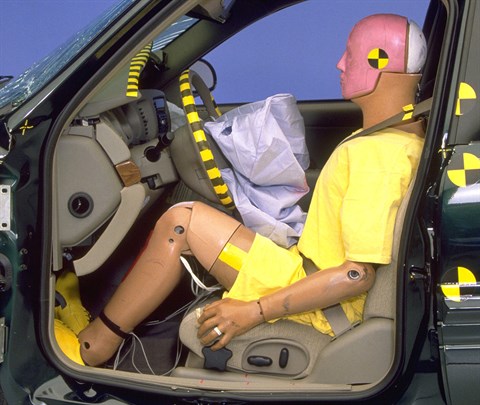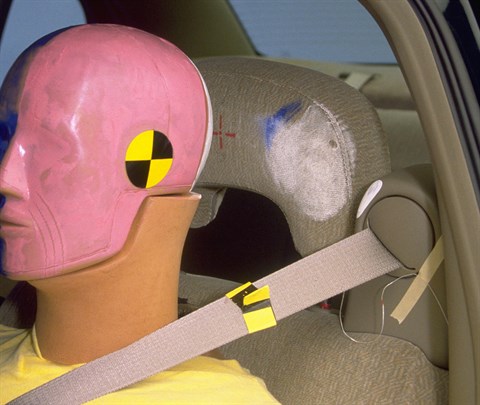Moderate overlap front: original test
Rating applies to 2000-05 models built after April 1999
Tested vehicle: 2000 Buick LeSabre Custom 4-door
The Buick LeSabre and Pontiac Bonneville were redesigned for the 2000 model year, and the Oldsmobile Aurora was redesigned for 2001. All 2000 and later Buick LeSabre models manufactured after April 1999 include structural changes to improve occupant protection in frontal crashes. All Bonneville and Aurora models include these same improvements (note: information about when a specific vehicle was manufactured is on the certification label typically affixed to the car on or near the driver door).
The Insurance Institute for Highway Safety has evaluated the crashworthiness of a LeSabre with the structural changes in a 40 mph frontal offset crash test into a deformable barrier.
The Oldsmobile Aurora was dropped after the 2003 model year, and the Buick LeSabre and Pontiac Bonneville were dropped after the 2005 model year. The LeSabre was replaced by the Buick Lucerne.
| Overall evaluation | |
|---|---|
| Structure and safety cage | |
| Driver injury measures | |
| Head/neck | |
| Chest | |
| Leg/foot, left | |
| Leg/foot, right | |
| Driver restraints and dummy kinematics |

Action shot taken during the frontal offset crash test.

The dummy's position in relation to the steering wheel and instrument panel after the crash test indicates that the driver's survival space was maintained well.

Smeared greasepaint indicates where the dummy's head hit the head restraint and shoulder belt housing during rebound. Front lap/shoulder belts are mounted to the seats.

The active front head restraints, new in the 2000 LeSabre, were designed to move automatically into position to provide protection from whiplash injuries in rear-end collisions. However, the initial position of the head restraint (too far from the head of an average-size male) is inadequate to provide the intended protection.
Head restraints & seats
Seat type: All seats AHR
| Overall evaluation | |
|---|---|
| Dynamic rating | |
| Seat/head restraint geometry |
About the head restraint & seat test
Currently, IIHS tests apply only to front seats.
